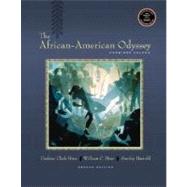
Darlene Clark Hine is John A. Hannah Professor of American History at Michigan State University and President of the Organization of American Historians (20012002). Hire received her BA at Roosevelt University in Chicago, and her MA and Ph.D. from Kent State University, Kent, Ohio. Hire has taught at South Carolina State University and at Purdue University. In 2000-2001 she was a fellow at the Center for Advanced Study in the Behavioral Sciences at Stanford University. She is the author and/or editor of fifteen books, most recently The Harvard Guide to African American History (Cambridge: Harvard University Press, 2000) coedited with Evelyn Brooks Higginbotham and Leon Litwack. She coedited a two volume set with Earnestine Jerkins, A Question of Manhood: A Reader in Black Men's History and Masculinity (Bloomington: Indiana University Press, 1999, 2001); and with Jacqueline McLeod, Crossing Boundaries: Comparative History of Black People in Diaspora (Bloomington: Indiana University Press, 2000pk). With Kathleen Thompson she wrote A Shining Thread of Hope: The History of Black Women in America (New York: Broadway Books, 1998), and edited with Barry Gaspar, More Than Chattel: Black Women and Slavery in the Americas (Bloomington: Indiana University Press, 1996). She won the Dartmouth Medal of the American Library Association for the reference volumes coedited with Elsa Barkley Brown and Rosalyn Terborg-Penn, Black Women in America: An Historical Encyclopedia (New York: Carlson Publishing, 1993). She is the author of Black Women in White: Racial Conflict and Cooperation in the Nursing Profession, 1890-1950 (Bloomington: Indiana University Press, 1989). Her forthcoming book is entitled Black Professional Class and Race Consciousness: Physicians, Nurses, Lawyers, and the Origins of the Civil Rights Movement, 1890-1955. She is president-elect of the Southern Historical Association (2002-2003) .
William C. Hine received his undergraduate education at Bowling Green State University, his master's degree at the University of Wyoming, and his Ph.D. at Kent State University. He is a professor of history at South Carolina State University. He has had articles published in several journals, including Agricultural History, Labor History, and the Journal of Southern History. He is currently writing a history of South Carolina State University.
Stanley Harrold, Professor of History at South Carolina State University, received his bachelor's degree from Allegheny College and his master's and Ph.D. degrees from Kent State University. He is coeditor of Southern Dissent, a book series published by the University Press of Florida. He received during the 1990s two National Endowment for the Humanities Fellowships to pursue research dealing with the antislavery movement. Professor Harrold is a historian of nineteenth-century American reform. His books include: Gamaliel Bailey and Antislavery Union (1986), The Abolitionists and the South (1995), Antislavery Violence: Sectional, Racial, and Cultural Conflict in Antebellum America (co-edited with John R. McKivigan, 1999) and American Abolitionists (2001). He has published articles in Civil War History, Journal of Southern History, Radical History Review, and Journal of the Early Republic. His most recent book, Subversives: Antislavery Community in Washington, D.C., 1828-1865, will be published in 2002.
| PART I Becoming African American | 1 | (119) | |||
|
2 | (22) | |||
|
24 | (22) | |||
|
46 | (26) | |||
|
72 | (22) | |||
|
94 | (26) | |||
| PART II Slavery, Abolition, and the Quest for Freedom: The Coming of the Civil War, 1793--1861 | 120 | (110) | |||
|
122 | (24) | |||
|
146 | (24) | |||
|
170 | (18) | |||
|
188 | (16) | |||
|
204 | (26) | |||
| PART III The Civil War, Emancipation, and Black Reconstruction: The Second American Revolution | 230 | (76) | |||
|
232 | (26) | |||
|
258 | (26) | |||
|
284 | (22) | |||
| PART IV Searching for Safe Spaces | 306 | (120) | |||
|
308 | (26) | |||
|
334 | (30) | |||
|
364 | (36) | |||
|
400 | (26) | |||
| PART V The Great Depression and World War II | 426 | (84) | |||
|
428 | (26) | |||
|
454 | (26) | |||
|
480 | (30) | |||
| PART VI The Black Revolution | 510 | (98) | |||
|
512 | (30) | |||
|
542 | (34) | |||
|
576 | (32) | |||
| Epilogue: ``A Nation Within a Nation'' | 608 |
The New copy of this book will include any supplemental materials advertised. Please check the title of the book to determine if it should include any access cards, study guides, lab manuals, CDs, etc.
The Used, Rental and eBook copies of this book are not guaranteed to include any supplemental materials. Typically, only the book itself is included. This is true even if the title states it includes any access cards, study guides, lab manuals, CDs, etc.